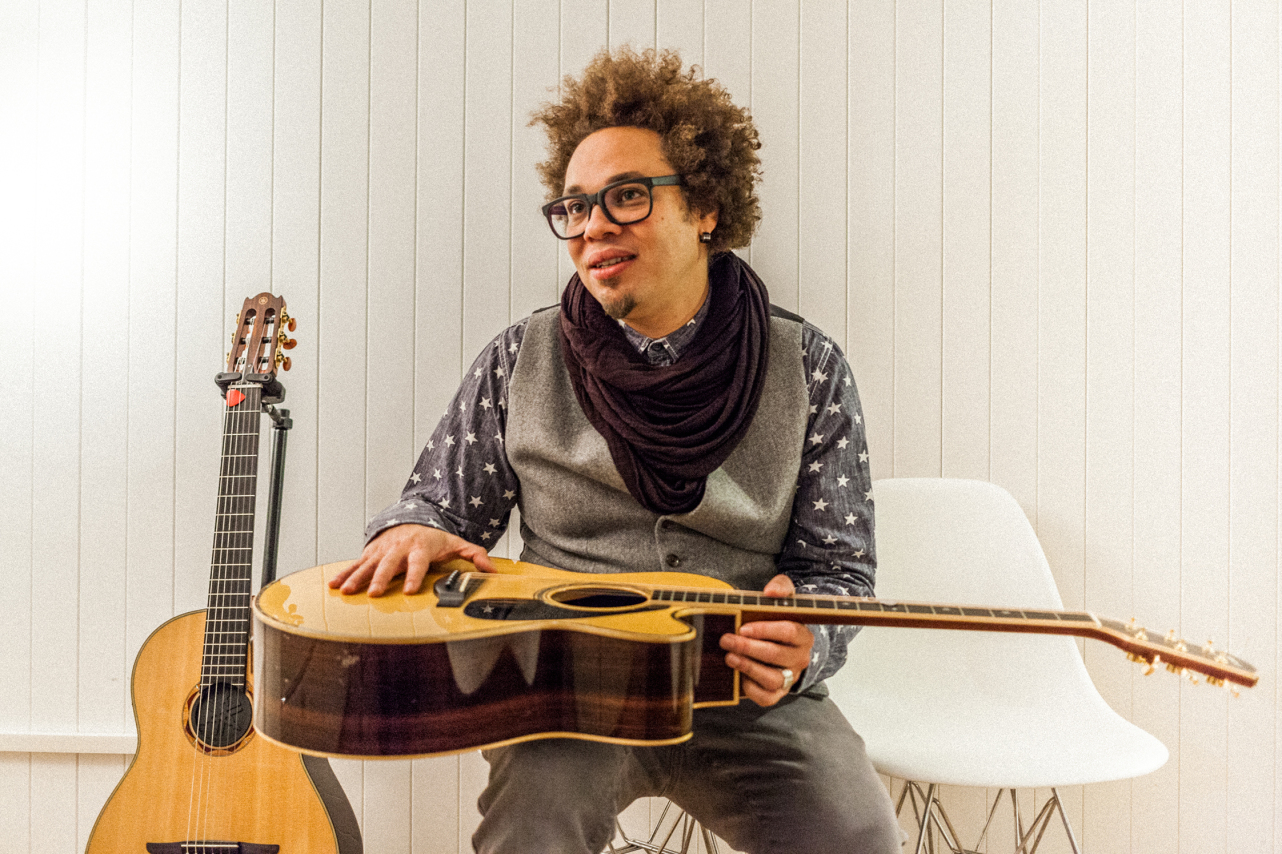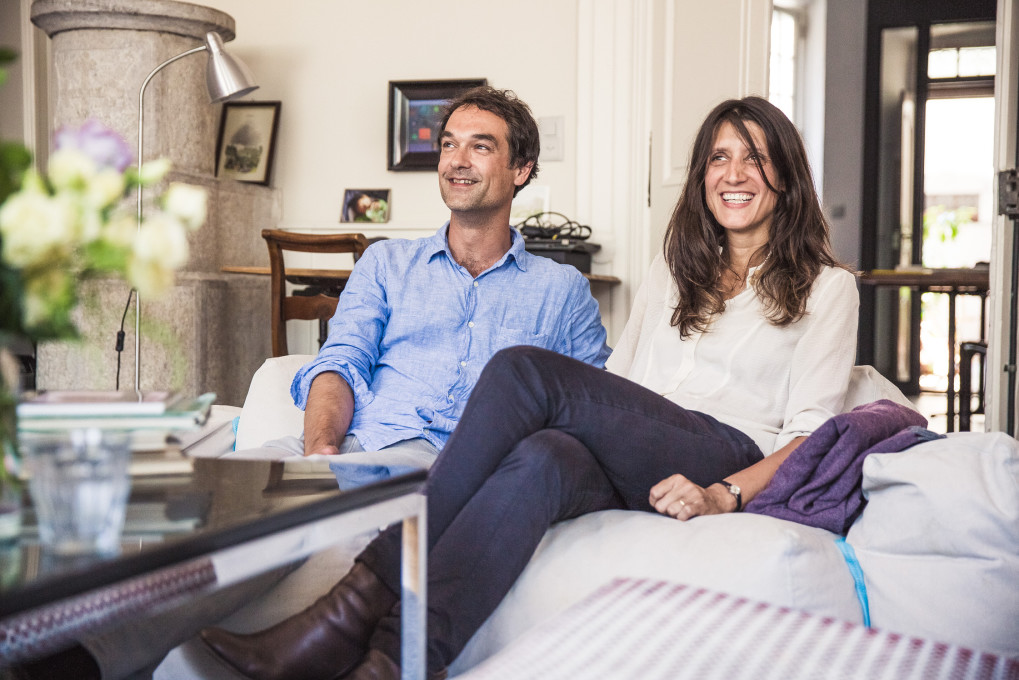Marc Sway
Musician
8. October 2015
Zürich
According to Swiss musician Marc Sway, music and design go together insofar as both disciplines combine aesthetics and functionality. The Voice of Switzerland juror consciously combines work and family life under one roof – not only music fills his house in the green Zurich municipality of Pfaffhausen but also a passion for beauty. Drawn to timeless design, he always looks for the functional in the aesthetic realm. And as much as instinct and a chaotic mind are prerequisites for his work, he prefers his surroundings to be practical and clean.

Your home incorporates aspects of both your work and personal life. Was that a deliberate decision?
A very deliberate one. On the one hand, this enables me to be closer to my children. And on the other hand, I can spontaneously go into the studio when a song idea takes over – sometimes even in the middle of the night. The muse is brutally unpredictable.
Which part of your creative process happens in your home studio?
I only make preliminary sketches here, meaning mostly the music happens here. I might develop rough lyric ideas at the same time.
You make do with very little equipment.
Yes, it really is interesting how little you actually need. Most of it I store in the USM Haller sideboard, which I purchased for this purpose.

“Music works when it moves and arouses emotions. It’s the same for design.”


Why exactly did you decide on this piece of USM furniture?
Simply put, the piece is practical: I can store all of my small equipment in it, and due to the integrated power rail, I don’t end up with tangled cables. My head is possessed by creative chaos; I need that for my music. For this reason, I prefer my environment to be rather practical and clean.
The recesses in the front sections of your sideboard are unusual.
This is what I particularly appreciate about USM: the little, individual extras. Upon my request, felt inserts were built into the front sections. They absorb the sound and thus optimize the acoustics of the room. I really appreciate when design is practical. It really is fascinating how USM blends aesthetics and functionality down to the last detail.
Are your speaker boxes from USM, too?
They are one-off pieces, a custom production. I prefer a delicate, clear design. This is hard to find in the case of speaker boxes. Incidentally, we had a gig at USM during our last tour. For this occasion, a pretty fancy piece was constructed to support our pantalon player's leg. It’s amazing what USM can figure out with nothing but two basic components.



Where else in the house, aside from the studio, is your love of music apparent?
I grew up with music, so it is ubiquitous in this house. The core is the living room, with my stereo system by Bowers & Wilkins. In the morning, it’s usually playing Bossa Nova for us. I particularly admire the speakers that go just perfectly with our white USM Haller sideboard. And if it’s the middle of the night and the family is sleeping, I use my Sennheiser headphones, a high-end product from a family business with whom I maintain a friendly relationship.
Did you intentionally combine the sideboard with the turquoise bureau?
The bureau originally came from my wife’s childhood bedroom. We kind of liked the contrast with the white USM furniture – something industrial-metallic in combination with wood. It’s exciting to watch when oppositions suddenly harmonize. Design and music have that in common.
Harmony tends to be related to aesthetics. Is music aesthetic for you?
Music is aesthetic insofar as every song has a design. Lyrics and melody come together in one body. If you refine the details of it – tighten it, if you will – you shape it based on aesthetic principles. Sometimes it ends up consciously downsized; other times, deliberately grandiose.



Marc collects bowties and glasses, his most important accessories.
What about functionality? Does music have to have a function?
Music functions whenever it touches somebody, whenever it evokes emotion. That’s the underlying goal. It’s no different in design. The Eames lounge chair, LeCorbusier’s – they are all classics that still haven’t lost their appeal today. For me, USM is undoubtedly included among those names.
You grew up multiculturally and very musically. Did your parents pave your way to music?
My mother is Brazilian, and my father is Swiss. Music was our universal language. My mother gave me the love of Samba and Bossa Nova; my father, the passion for soul and rock records. They surely facilitated my access to music, but they also complicated it for me.
How so?
On the one hand, there’s classical singer-songwriting, and on the other hand, there’s fiery Brazilian rhythms. I like to integrate my musical roots instinctively. That makes it interesting, but it also makes it more difficult to define a clear musical identity. It’s hard to put me in a box.


“It fascinates me how USM melds aesthetics and functionality in every detail.”
How do you approach a new song?
I often go to the studio, jam with the band and sing in a gibberish of German, English and Portuguese. It’s somewhat akin to filling a blank canvas on a mere whim. At the point where improvisation suddenly gets interesting, we start to create a newly construed picture: a song.
Do you prefer to work as part of a team or solo?
I prefer to work within my community. It starts with the writing, during which I have support from my good friend Sékou, a rapper from my community. Friends are responsible for the imagery and artwork as well. The photographer Jonathan Heyer takes care of the imagery. And Benny Goldstein does the art: he’s integrated into the development process from the start.
From the start?
Yes, he hears the songs even in rough states.



“Music has an aesthetic, because every song has a design.”

Marc needs little equipment. Most of it fits into his USM shelf.

Is it important to you that both processes – the musical and the visual – run parallel?
I am convinced that one has to evolve along with the other. I originally come from advertising, so I know that product and packaging have to do each other justice.
You were an advertising specialist. When did you decide to fully bank on music?
It came about very suddenly. I had asked my boss to reduce my workload to 50%. But he thought: either all or nothing. If things didn’t work out, I could come back. So I put everything on one card instead of on compromise.
And it worked out. You’re a gold-awarded musician in Switzerland, and you juried two seasons of Voice of Switzerland. Has success changed your life?
My success is a privilege. This also means that my family sometimes has to share me with the public; for example, during a visit to the circus with my daughter. But that’s also why I spend a lot of time at home, intentionally dedicated to family.





Do you travel much?
Professionally, I travel to New York quite a bit, where I collaborate with writing teams. I love that city – it has a really unique pulse. And it’s close to the water. I love water.
Do you have a favorite souvenir from New York?
I usually come home with finished songs – that’s my souvenir. That reminds me: I bought one of my favorite bowties on Bedford Avenue. I wore it again last night.
In Switzerland you’re well known for wearing bowties. Do you have a collection?
A small but nice one. I enjoy using an accessory that has gone out of fashion. But I don’t wear it often. These days, my look consists of glasses and, of course, my hairstyle.


Thank you, Marc, for the exciting conversation about your passion for music and furniture.
This portrait was produced by the international interview magazine Freunde von Freunden. Find more USM furniture for your home and workspace here.


